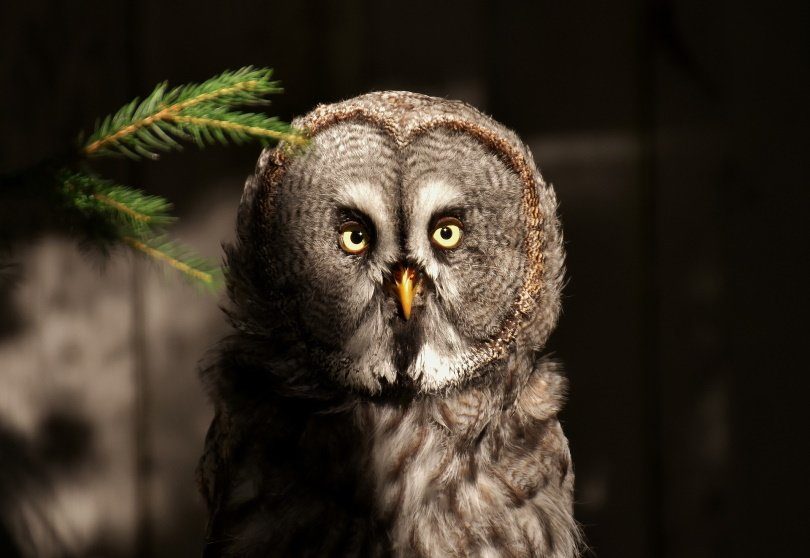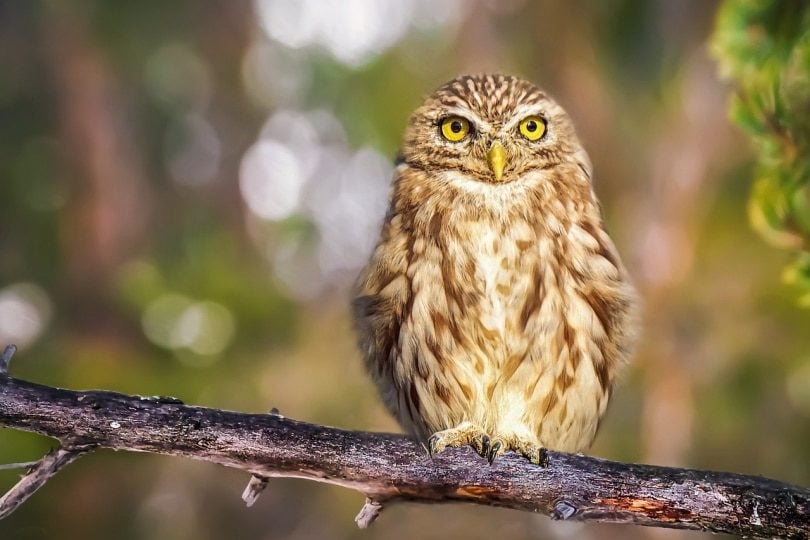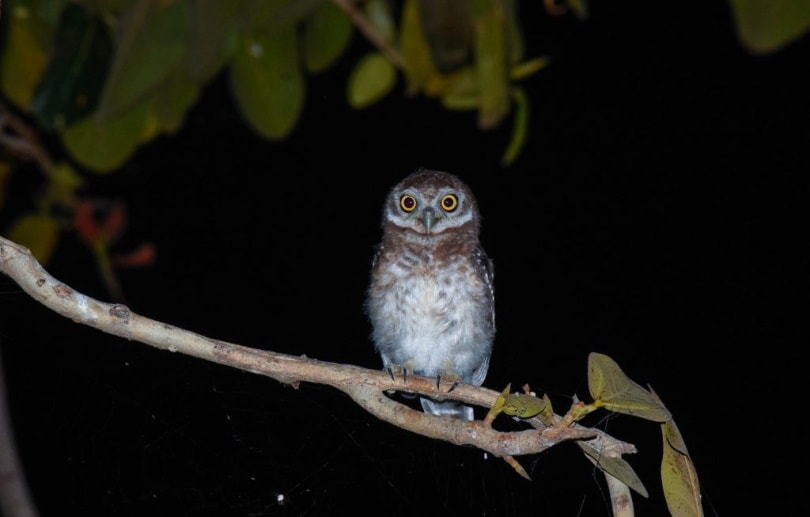Are All Owls Nocturnal? Everything You Need to Know!
Last Updated on

Owls are birds of the night with quite the reputation for being silent hunters, snatching up unsuspecting prey in the wee hours. Owls have incredibly quiet wing beats, and many are nearly undetectable. But of all the hundreds of owl species in the world, how many of them are nocturnal?
Interestingly, while there are dozens of varieties of owls worldwide, not all of them are awake at night. We’ll give you the details on which are early risers and which stay up late into the night.

What Are Owls?
Owls are birds from the Strigiformes order. This group is composed of over 200 (typically solitary) birds of prey that are vigilant and sharp. Owls have large eyes with binocular vision and heads that can turn a maximum of 270 degrees.
The largest owl is the Blakiston fish owl, and it is also one of the rarest. These birds can reach impressive wingspans of 6 feet, stand 28 inches tall, and weigh up to 10 pounds. The smallest of all owls is the elf owl with a wingspan of only 10.5 inches, standing about 5.5 inches tall, weighing just 1.4 ounces.
So, as you can see, there is quite a range of sizes. However, what they have in size variation, they lack in color. Most owls have neutral shades, ranging from nearly black to snow white.

What Do Owls Eat?
Owls are carnivorous, so whether they are nocturnal (night) or diurnal (day), they require meat to survive. These opportunistic eaters can snack on a variety of wildlife depending on their location and species.
- Rodents
- Reptiles
- Smaller birds
- Insects
Depending on the size of prey, owls can swallow small prey head first. Any bones that owls cannot digest are later regurgitated in pellets.
Why Are Most Owls Nocturnal?
Owls are relentless predators. They often snatch prey before they even have a chance to react. Being nocturnal is a huge benefit to owls, as they have incredible vision and silent flight—which is incredibly advantageous for hunting.
With their fiercely strong talons, they can clutch prey quickly, and their sharp beaks will tear flesh in seconds. However, depending on where the owl lives, it might not be as advantageous for some to hunt at night, causing adaptations.


Nocturnal vs. Diurnal vs. Crepuscular
Even though the most significant percentage of owls are nocturnal, many species are also crepuscular (both day and night). Two species are completely diurnal, accounting for the smallest grouping. Even nocturnal owls are alert in daylight hours in case any threats are near.
Interestingly, an owl’s eye color can tell you what part of a day they’re most active.
Nocturnal Owls
An estimated 69% of owls are nocturnal. Nocturnal owls have dark eyes. These owls are stealthily built for night hunting, able to see prey with great detection.
- Great horned owl
- Barn owl
- Northern spotted owl
- Barred owl
Diurnal Owls
An estimated 3% of owls are diurnal. Diurnal owls have yellow eyes. There are only two species of owl that are truly diurnal—the pygmy owl and the northern hawk owls.
Northern hawk owls are found in North America and Asia. When they hunt, they have a style similar to hawks and falcons. They look down on prey from high perches or even in mid-flight.
Pygmy owls live on the West Coast of North America. They are speedy and efficient in flight, catching their prey in mid-flight.

Crepuscular Owls
An estimated 22% of owls are crepuscular. Crepuscular owls have orange eyes. Crepuscular owls hunt at dusk and dawn when the light has not fully set or come out.
- Snowy owls
- Short-eared owls
- Burrowing owls
- Eurasian eagle owls
- Great gray owls
Unknown Owls
Owls can be very secretive. There is a 6% margin of an unknown factor in this category where scientists simply don’t have enough data to know for sure. As scientists and researchers are able to study owls in their natural habitats, we will know more about them in the future.
No matter what part of the day an owl species prefers, they all take their off time to rest and restore their energy from long hours of hunting.

Conclusion
Though most owls are nocturnal, they can be out practically any part of the day, depending on the species. Even though we know most owls prefer nighttime hours to hunt, you can tell what time of day an owl is out by the color of their eyes.
Remember, dark eyes equal nocturnal, orange eyes equal crepuscular, and yellow eyes equal diurnal. So, now next time you see a picture of an owl, you can tell your friends about it.
Featured Image Credit: Alexas fotos, Pixabay
About the Author Robert Sparks
Robert’s obsession with all things optical started early in life, when his optician father would bring home prototypes for Robert to play with. Nowadays, Robert is dedicated to helping others find the right optics for their needs. His hobbies include astronomy, astrophysics, and model building. Originally from Newark, NJ, he resides in Santa Fe, New Mexico, where the nighttime skies are filled with glittering stars.
Related Articles:
How to Clean a Refractor Telescope: Step-by-Step Guide
How to Clean a Telescope Eyepiece: Step-by-Step Guide
How to Clean a Rifle Scope: 8 Expert Tips
Monocular vs Telescope: Differences Explained (With Pictures)
What Is a Monocular Used For? 8 Common Functions
How to Clean a Telescope Mirror: 8 Expert Tips
Brightfield vs Phase Contrast Microscopy: The Differences Explained
SkyCamHD Drone Review: Pros, Cons, FAQ, & Verdict
